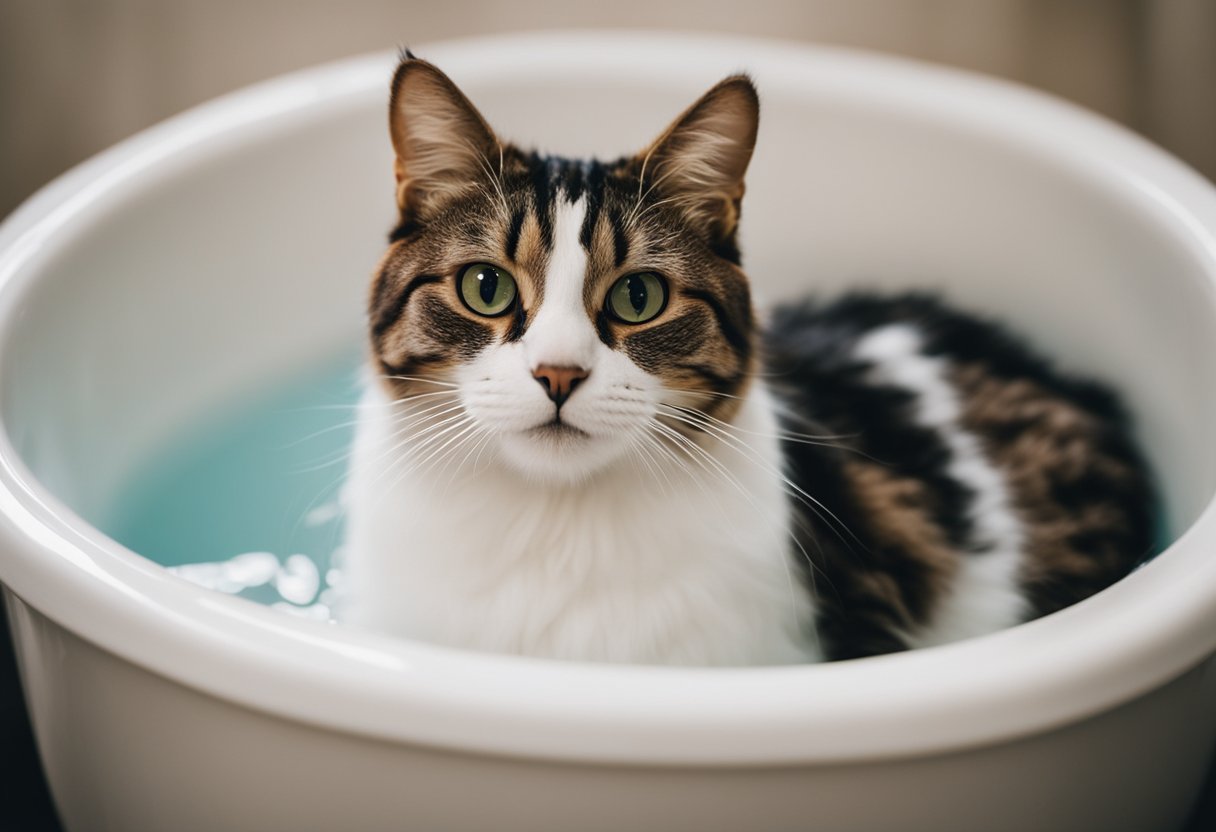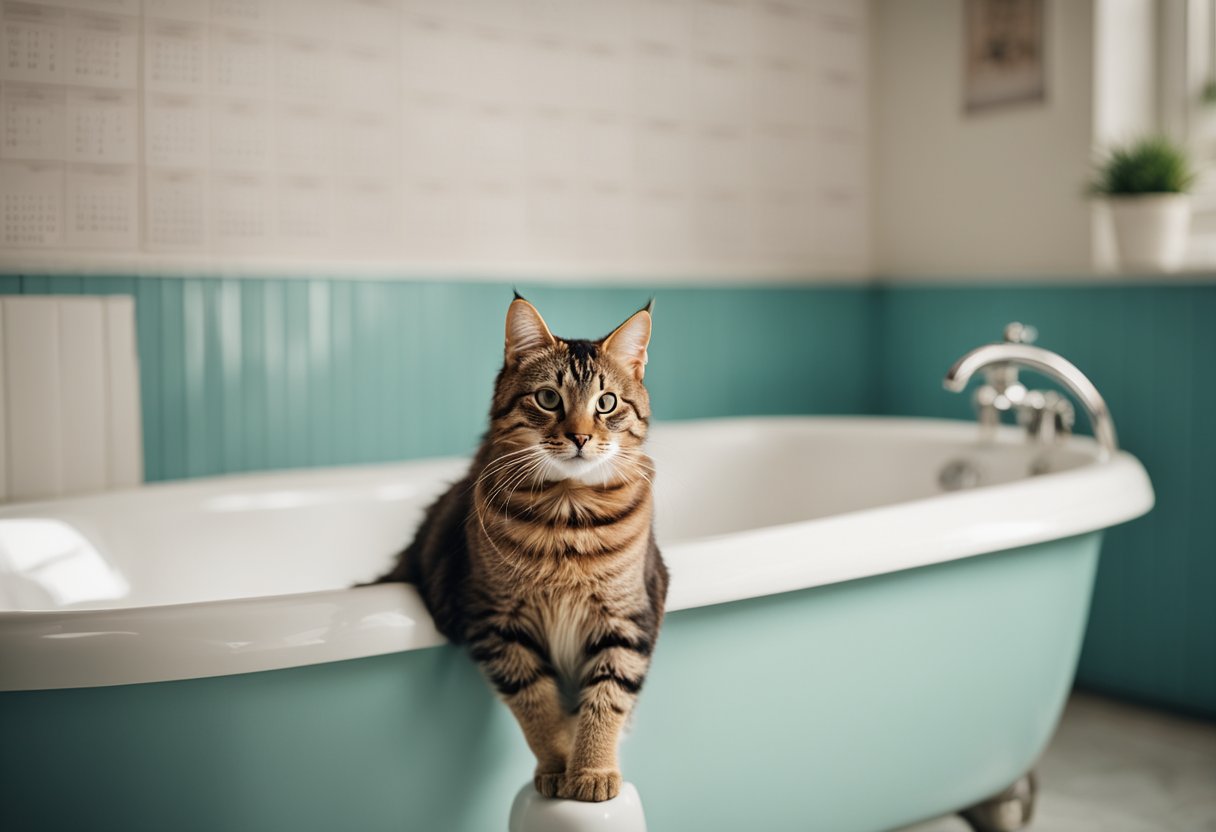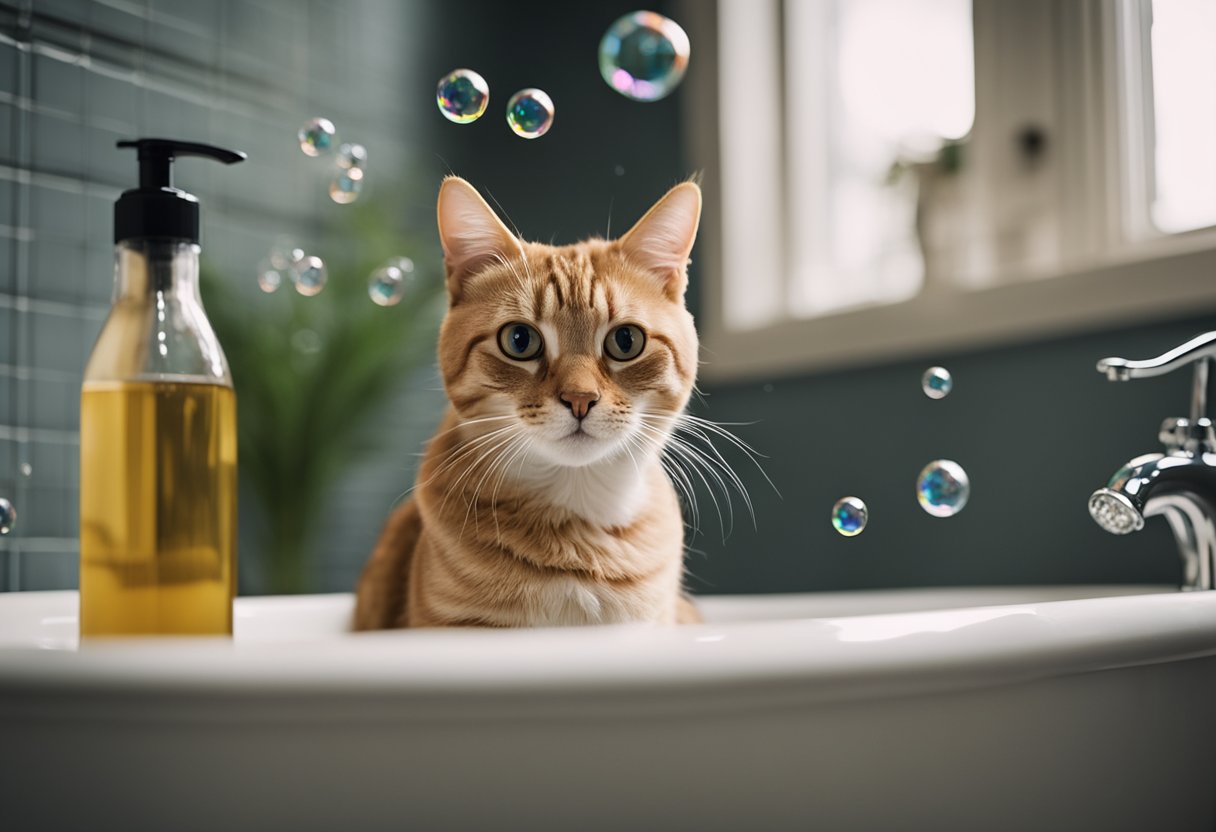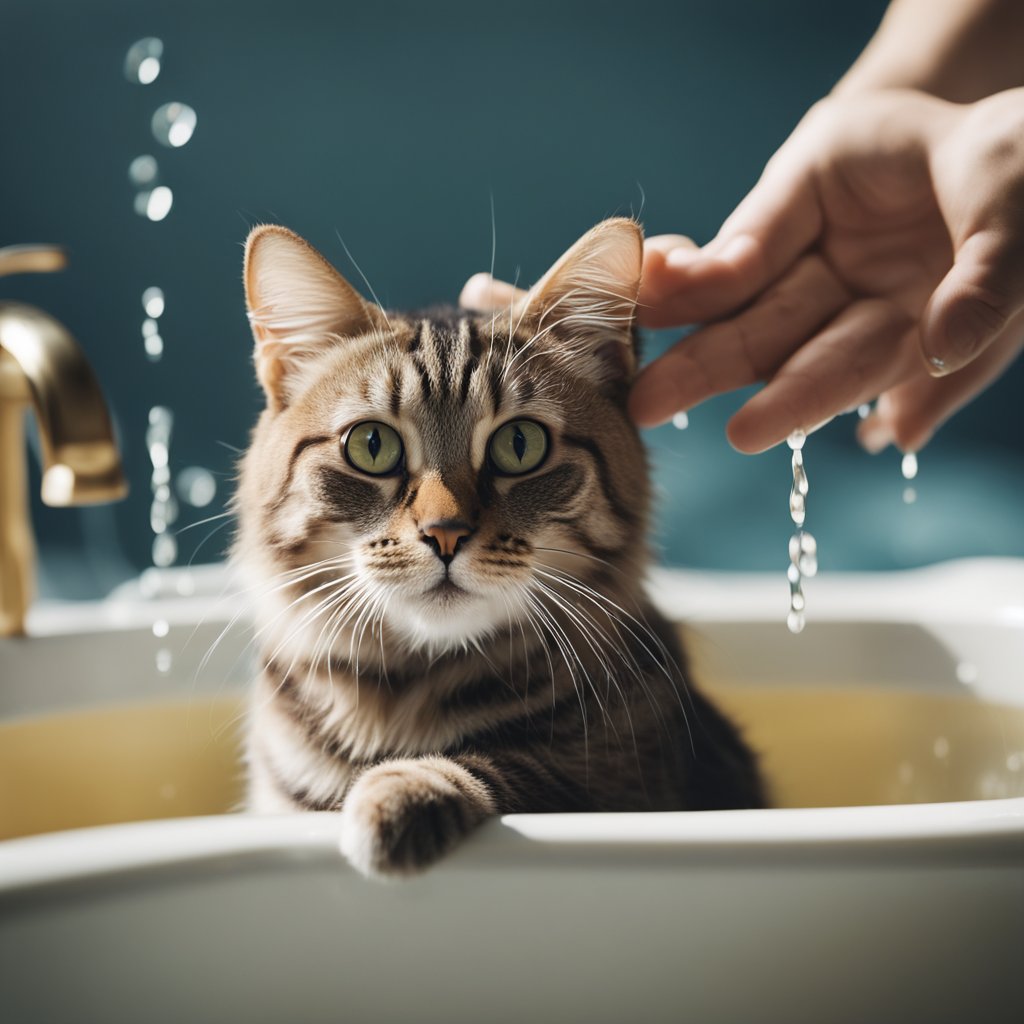How Often Should I Bathe My Cat? A Vet’s Advice
As a cat owner, you want to make sure your furry friend is healthy, happy, and clean. One question that often comes up is, how often should you bathe your cat? The answer is not as straightforward as you might think.

First of all, it’s important to note that cats are known for their cleanliness and grooming habits. In fact, most cats do a great job of keeping themselves clean and don’t require regular baths. However, there are some situations where a bath may be necessary. For example, if your cat gets into something sticky or dirty, or if they have a medical condition that requires bathing.
So, how often should you bathe your cat? The general rule of thumb is that you should only bathe your cat when necessary. Over-bathing can strip their skin and coat of natural oils, which can lead to dryness and irritation. However, if your cat does need a bath, it’s important to do it properly to avoid stressing them out and causing them discomfort.
Understanding Your Cat’s Grooming Needs

As a cat owner, it’s important to understand your cat’s grooming needs to keep them healthy and happy. While cats are known for their self-grooming habits, they may still need a bath from time to time. Here are a few things to consider when determining how often to bathe your cat.
Factors Influencing Bathing Frequency
The frequency at which you should bathe your cat depends on several factors, including their coat type, lifestyle, and health. Cats with long hair, such as Persians or Maine Coons, may require more frequent baths to prevent matting and hairballs. On the other hand, short-haired breeds generally require less frequent bathing. Adjust the bathing frequency based on your cat’s specific coat needs.
Your cat’s lifestyle also plays a role in determining how often to bathe them. Indoor cats that spend most of their time indoors may require less frequent baths than outdoor cats that get dirty more often. Additionally, cats with health issues such as allergies or skin conditions may require more frequent bathing to keep their skin clean and healthy.
Recognizing Self-Grooming Behaviors
Cats are known for their self-grooming habits, which can help keep their coat clean and healthy. However, there are times when your cat may need a bath to supplement their self-grooming efforts. Look for signs that your cat may need a bath, such as a greasy or matted coat, a strong odor, or visible dirt or debris on their fur.
If you do decide to bathe your cat, it’s important to use a cat-specific shampoo and to avoid getting water in their ears or eyes. Use a gentle, soothing touch and reward your cat with treats and praise to make the experience as positive as possible.
By understanding your cat’s grooming needs, you can help keep them healthy and happy. Keep in mind that every cat is different, so it’s important to adjust your bathing frequency based on your cat’s specific needs.
Bathing Your Cat

Bathing your cat is an essential part of cat grooming. However, how often you should bathe your cat depends on several factors such as their breed, coat type, and lifestyle. In this section, we will discuss how to prepare for the bath, the step-by-step bathing process, and post-bathing care.
Preparing for the Bath
Before giving your cat a bath, it is essential to prepare everything you need. Here are some things you should do to prepare:
- Choose the right shampoo: Use a cat-specific shampoo that is gentle and does not contain any harsh chemicals that could irritate your cat’s skin.
- Brush your cat’s coat: Brushing your cat’s coat before the bath helps remove any loose hair, dirt, or debris.
- Trim your cat’s nails: Trim your cat’s nails to prevent them from scratching you or themselves during the bath.
- Fill the tub with warm water: Fill the tub with a few inches of warm water (not hot) before bringing your cat in.
Step-by-Step Bathing Process
Here is a step-by-step process to follow when bathing your cat:
- Place your cat in the tub: Gently place your cat in the tub and talk to them in a soothing voice to help them relax.
- Wet your cat’s coat: Use a cup or a gentle stream of water to wet your cat’s coat. Be careful not to get water in their ears or eyes.
- Apply shampoo: Apply a small amount of shampoo to your cat’s coat and lather it gently. Avoid getting shampoo on their head, ears, and face.
- Rinse your cat’s coat: Rinse your cat’s coat thoroughly with warm water. Make sure there is no shampoo left on their coat.
- Dry your cat: Use a towel to dry your cat’s coat gently. You can also use a hairdryer on a low setting to dry their coat.
Post-Bathing Care
After the bath, here are some things you should do to take care of your cat:
- Keep your cat warm: After the bath, keep your cat warm until they are completely dry. You can use a towel or a blanket to wrap them up.
- Brush your cat’s coat: Brush your cat’s coat after the bath to remove any tangles and prevent matting.
- Reward your cat: Reward your cat with treats or playtime to help them associate the bath with positive experiences.
Remember, not all cats need to be bathed frequently. Some cats are good at grooming themselves and do not require frequent baths. However, if your cat has a skin condition or gets into something dirty, a bath may be necessary. If you are unsure about how often you should bathe your cat, consult with your veterinarian.
Resources

When it comes to bathing your cat, it’s always best to consult with your veterinarian first. They can provide you with specific advice based on your cat’s breed, age, and overall health. However, there are some general guidelines you can follow.
According to Catster, most cats do not need to be bathed more than once a month. Over-bathing can strip your cat’s skin of natural oils, which can lead to dryness and irritation. However, if your cat gets into something particularly dirty or smelly, a bath may be necessary.
When it comes to bathing frequency, it’s important to consider your cat’s individual needs. Some cats may need more frequent baths due to skin or coat issues, while others may never need a bath at all. If you’re unsure about how often to bathe your cat, consult with your veterinarian.
If you do need to bathe your cat, there are some tips and tricks you can follow to make the process easier. Rover.com recommends using a shampoo specifically designed for cats, as human shampoos can be too harsh for their skin. Additionally, you can try using treats or toys to distract your cat during the bath.
Remember, bathing your cat should not be a stressful or traumatic experience. With a little bit of patience and preparation, you can help keep your cat clean and healthy.
Frequently Asked Questions

Is it necessary to bathe a cat?
Cats are known for their cleanliness and grooming habits. In most cases, cats do not need to be bathed unless they get into something particularly dirty or smelly. According to Catster, the general rule of thumb is that cats need a maximum of one bath every few months. Bathing a cat too often can strip their skin of natural oils, which can lead to dryness and irritation.
How do you know when your cat needs a bath?
You can tell when your cat needs a bath if they have a strong odor, visible dirt or debris on their fur, or if their coat appears greasy or matted. However, it’s important to note that cats are sensitive to changes in their routine, and bathing can be a stressful experience for them. So, it’s best to bathe your cat only when necessary.
Should you bathe indoor cats?
Indoor cats generally do not need to be bathed as frequently as outdoor cats. According to FirstVet, most indoor cats groom themselves regularly and do such a great job that we don’t have to worry about bathing them. However, if your indoor cat gets into something particularly dirty or smelly, or if they have a medical condition that requires bathing, you may need to give them a bath.
How often should I bathe my outdoor cat?
Outdoor cats may need to be bathed more frequently than indoor cats, especially if they spend a lot of time outside or get into dirty or smelly situations. However, it’s important to not bathe them too often, as it can lead to dryness and irritation. According to Zumvet, you should adjust the bathing frequency based on your cat’s specific coat needs.
How often should you bathe an indoor cat?
As mentioned earlier, indoor cats generally do not need to be bathed as frequently as outdoor cats. According to Betterpet, you should aim to bathe your cat no more than once every few months, unless they get into something particularly dirty or smelly. However, if your indoor cat has a medical condition that requires bathing, you may need to give them a bath more frequently.
Should I just wash my cat with water?
No, you should not wash your cat with water alone. According to Preventive Vet, water alone can actually make your cat’s fur more difficult to manage and can lead to matting. Instead, use a cat-specific shampoo and follow the instructions carefully.
See also :how often should i groom my cat
